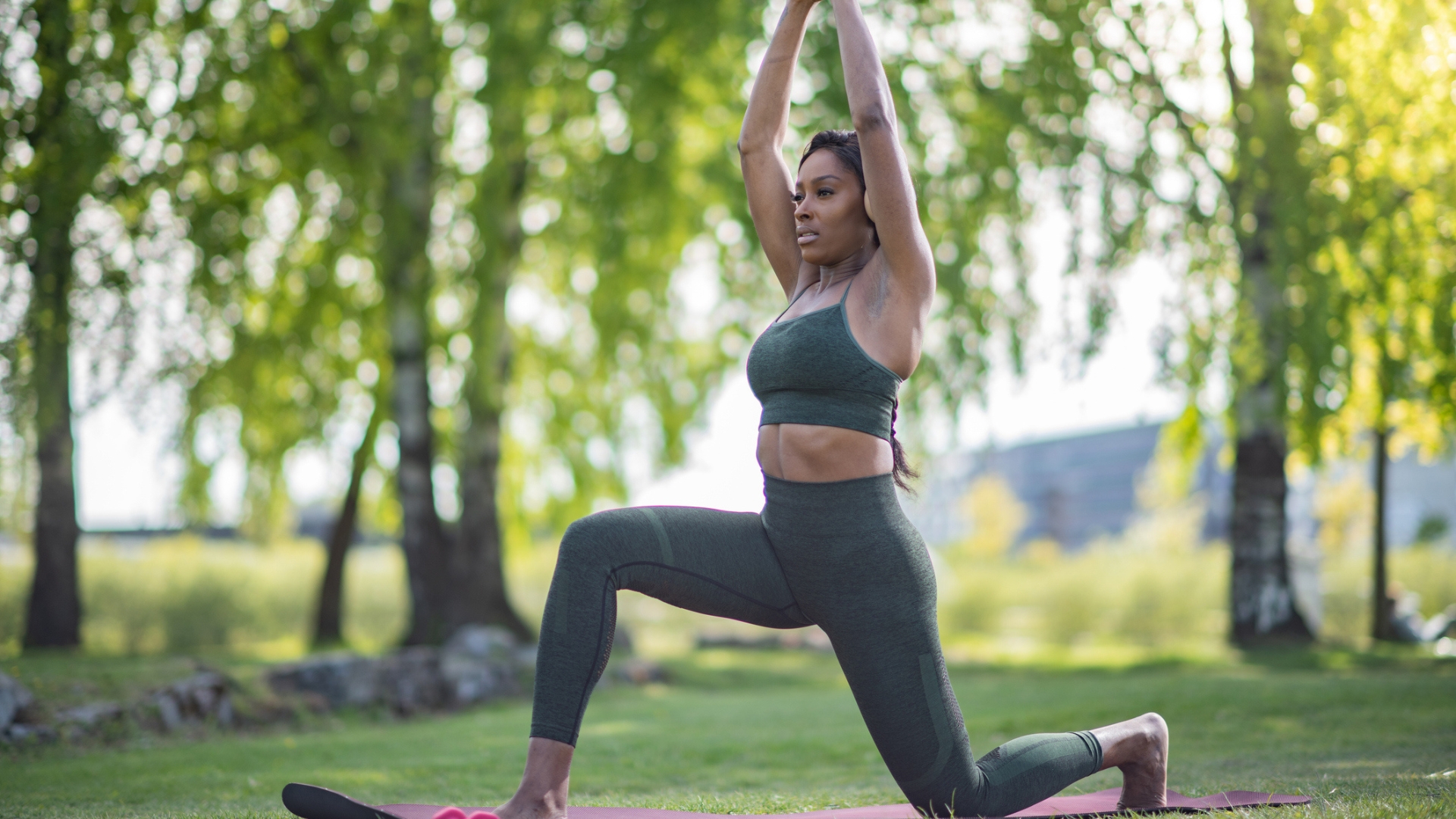"The world's greatest stretch is too demanding for beginners"—here are six better alternatives, according to a certified stretch therapist
Don't believe the hype—swap the WGS for these entry-level alternatives

Some things in life will always remain a mystery—like how the so-called world's greatest stretch (WGS) got its name.
This popular mobility move, which involves a deep lunge and spinal twist, has long been celebrated as the ultimate full-body mobility move.
There’s no denying it’s comprehensive: it engages numerous muscle groups, opens the hips, mobilizes the thoracic spine and helps combat aches and pains caused by sitting at a desk all day.
But, is it truly the world's greatest stretch? I'm a personal trainer, and use the move regularly to loosen up before a workout, but I rarely turn to it when training clients, especially beginners.
That’s because the move requires some advanced hip flexor and thoracic spine mobility, core control and wrist and shoulder stability to perform effectively and safely.
Josh Silvera, a certified assisted stretch therapist and Pilates instructor at London's Stretch Lab, agrees. "The WGS is an excellent full-body move for advanced users but it's often too demanding for beginners," he tells Fit&Well.
"Many newcomers will struggle to engage the right muscles during the move, which can defeat its purpose and sometimes lead to frustration or compensations. For greater accessibility and muscle activation, simpler, more progressive moves can create far better foundations," he adds.
Start your week with achievable workout ideas, health tips and wellbeing advice in your inbox.
I challenged Silvera to come up with a more beginner-friendly routine that everyone—newcomers and experienced exercisers alike—would benefit from. One that addresses the WGS's blindspots, gently raises the heart rate and sets you up for whatever workout comes your way. And he didn't disappoint.
Here are six of the world's greatest stretches for beginners, according to a certified stretch therapist.
Six of the world's greatest stretches for beginners
A post shared by Fit&Well (@wearefitandwell)
A photo posted by on
1. Thoracic rotation
Reps: 8-10
Why? "These will improve upper-back mobility without the risk of straining your lower back. Whether performing seated or on all fours, aim to keep your hips still while rotating through the middle and upper spine," says Silvera.
How to do it seated:
- Sit cross legged on the floor.
- Hold your arms across your chest.
- Gently rotate your mid and upper back to one side, allowing your gaze to follow. Then turn to the other side.
- Keep your hips stable and avoid over-rotating in either direction.
How to do it on all fours:
- With your shoulders over your wrists and hips over your knees, place one hand behind your head.
- Gently rotate your mid and upper back up to the ceiling to open your chest.
- Reverse the rotation to bring your elbow down towards the floor.
- Keep your hips stable.
- Complete the repetitions on one side, then switch sides.
2. Standing or kneeling side bend
Time: 20-30sec each side
Why? "Side bends gently stretch the sides of the spine and ribcage, encouraging lateral flexibility that's often missed in standard routines. Concentrate on lengthening your body upward before bending sideways," says Silvera.
How to do it:
- From standing or sitting, keep your hands by your sides to use as a gauge of your range of motion in each direction.
- Lengthen through your torso, then gently bend to one side.
- Keep your hips still to avoid compensating for any stiffness in your spine.
- Hold the stretch on one side, then repeat on the other.
3. Split squat
Reps: 8-10
Why? "An effective pulse raiser, split squats build dynamic hip mobility and glute strength while improving balance. Focus on vertical movement rather than shifting forward or back too far," says Silvera.
How to do it:
- From standing, step one foot forward and the other back roughly the same distance.
- Keeping your torso upright and hands on your hips for balance, lower your back knee toward the floor until it taps the floor.
- Drive up through the front foot to return to the starting split stance
- Complete the repetitions on one side, then switch legs.
4. Good morning
Reps: 10-12
Why? "Good mornings gently activate and stretch the hamstrings, while strengthening the lower back. Keep a neutral spine and hinge at your hips, not your waist, throughout," says Silvera.
How to do it:
- Stand with feet hip-width apart with a slight bend in your knees.
- Hold your hands across your chest or hold a light weight at your chest.
- Hinge at your hips, pushing your bum back as you lower your chest toward the floor. Try to avoid bending your knees.
- You should feel a stretch in the back of your thighs.
- Repeat with a slow and controlled tempo.
5. Door frame chest stretch
Time: 20-30sec each side
Why? "This restorative, soothing stretch opens the front of the shoulders and upper back, helping improve posture. Keep your shoulder relaxed away from your ears and avoid over-rotating your torso," says Silvera.
How to do it:
- Stand next to an open doorway, with your arm bent at a 90˚ angle, forearm and hand resting against the doorframe.
- Ease your body forward until you feel a gentle stretch in your chest and front of shoulders.
- Hold the stretch then switch sides.

Sam Rider is an experienced freelance journalist, specialising in health, fitness and wellness. He is also a REPS level 3 qualified personal trainer.
